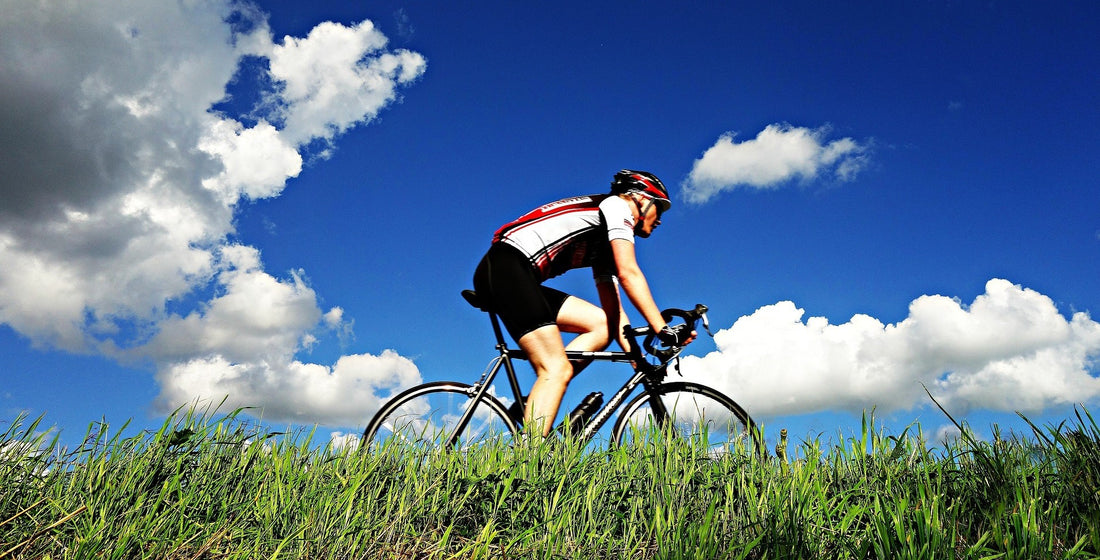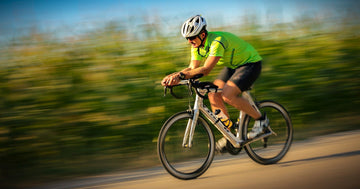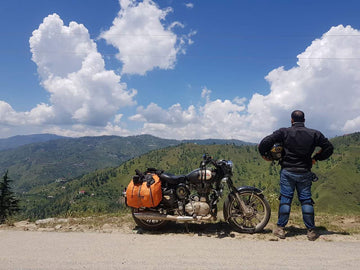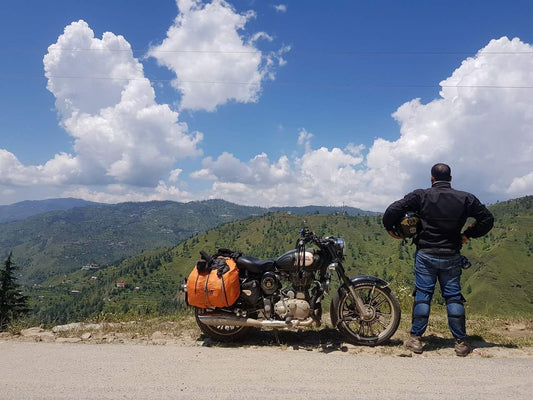From Quads to Glutes: Discover the Muscles Cycling Tones
Are you ready to pedal your way to a toned and sculpted physique? Cycling is not only a fantastic cardiovascular workout, but it also targets multiple muscle groups, giving you a full-body workout like no other.
From quads to glutes, this dynamic form of exercise engages and strengthens various muscles, helping you achieve the lean and toned look you desire.
As you power through those pedal strokes, your quadriceps, hamstrings, and calves are working hard to propel you forward, building strength and endurance.
But it doesn't stop there. Cycling also engages your glutes, giving them a firm and lifted appearance.
Let's explore the incredible benefits of cycling on your journey to a stronger, fitter, and more confident you.
Muscles used in cycling
Cycling is a highly efficient exercise that engages a wide range of muscles in your body. Understanding which muscles are involved can help you optimize your cycling performance and target specific areas for toning and strengthening.
Quadriceps: The powerhouse of cycling
The quadriceps, located on the front of your thighs, are the primary muscles responsible for generating power during cycling.
As you push down on the pedals, your quadriceps contract and extend your leg, propelling you forward. This constant contraction of the quadriceps helps to build strength and endurance in these muscles, leading to toned and sculpted thighs.
But the benefits of cycling for your quadriceps don't end there. The repetitive nature of cycling also promotes muscular endurance, allowing you to pedal for longer periods without fatigue. This helps to increase the overall tone and definition of your quadriceps, giving you lean and well-defined legs.
Glutes: The engines behind cycling power
Your gluteal muscles, also known as the glutes, play a vital role in cycling. These muscles, located in your buttocks, are responsible for generating power and propulsion during each pedal stroke.
As you push down on the pedals, your glutes contract to extend your hip and drive your leg back, propelling you forward.
Cycling is particularly effective at targeting and toning the glutes due to the constant engagement and activation of these muscles.
Regular cycling workouts can lead to firmer and more lifted glutes, giving you a more shapely and defined backside.
Hamstrings: Supporting muscles for cycling performance
The hamstrings, located on the back of your thighs, work in conjunction with the quadriceps to power your pedal strokes. These muscles help to flex your knee and extend your hip, working in harmony with the quadriceps to generate forward momentum.
While the quadriceps are predominantly responsible for the downward phase of the pedal stroke, the hamstrings come into play during the upward phase, pulling the pedal back up. This balanced recruitment of the hamstrings and quadriceps ensures optimal power output and efficiency during cycling.
Regular cycling can help to strengthen and tone the hamstrings, leading to more defined and sculpted leg muscles. Strong hamstrings also contribute to improved cycling performance and reduced risk of injury.
Calves: Providing stability and power during cycling
Your calf muscles, located on the back of your lower legs, are heavily involved in cycling. These muscles, namely the gastrocnemius and soleus, provide stability and power as you pedal.
During the pedal stroke, your calf muscles contract to push the pedal downwards, generating power and propelling you forward. As you continue to cycle, the repetitive contraction and extension of the calf muscles help to build strength and definition in this area.
Strong calves not only contribute to better cycling performance but also give your lower legs a more sculpted and toned appearance. Regular cycling workouts can help you achieve well-defined calf muscles and improve overall lower body strength.
Core muscles: Maintaining balance and stability on the bike
While cycling primarily targets the lower body muscles, it also engages your core muscles to maintain balance and stability on the bike. Your core muscles, including the abdominals, obliques, and lower back muscles, play a crucial role in keeping your body stable during the dynamic movements of cycling.
As you pedal, your core muscles work to stabilize your spine and pelvis, preventing excessive swaying and maintaining proper alignment. This engagement of the core muscles not only enhances your cycling performance but also contributes to a stronger and more defined midsection.
Regular cycling can help to strengthen and tone your core muscles, resulting in improved posture, stability, and overall core strength. So while you're pedaling your way to toned legs and glutes, don't forget the importance of engaging your core for a complete and balanced workout.
Upper body muscles: Supporting posture and control during cycling
Although cycling primarily focuses on the lower body, your upper body muscles also play a role in supporting proper posture and control on the bike. Your back, shoulders, and arms work together to maintain a stable and efficient cycling position.
As you ride, your upper body muscles help to support your torso and maintain an upright posture. The muscles in your back and shoulders provide stability, while your arms assist in steering and controlling the bike.
While the upper body muscles may not be the primary focus of cycling, they still benefit from the constant engagement and support they provide during each ride. Regular cycling can help to improve upper body strength and posture, giving you a more balanced and toned physique.
Cycling workouts to target specific muscle groups
Now that you understand the muscles involved in cycling, let's explore some targeted workouts to further tone and strengthen these areas.
Quadriceps workout:
- Sprints: Incorporate short bursts of high-intensity sprints into your cycling routine. Find a flat stretch of road or use a stationary bike with resistance settings. Pedal as fast as you can for 20 to 30 seconds, focusing on engaging your quadriceps. Rest for 1 minute and repeat for a total of 5 to 10 sprints.
- Hill Climbs: Find a challenging hill or use an indoor cycling machine with incline settings. Pedal uphill, focusing on driving through your quadriceps to power your way to the top. Maintain a steady pace and push yourself to increase resistance or incline as you progress.
Glutes workout:
- Resistance Training: Incorporate exercises such as squats, lunges, and hip thrusts into your strength training routine. These exercises target the glutes and can help to further tone and lift this muscle group. Aim for 2 to 3 sessions per week, focusing on proper form and gradually increasing the weight or resistance.
- Climbing Intervals: Find a challenging hill or use an indoor cycling machine with incline settings. Alternate between seated and standing climbs, focusing on engaging your glutes throughout the entire pedal stroke. Perform 1 to 2 minutes of seated climbing followed by 1 to 2 minutes of standing climbing. Repeat for a total of 10 to 15 intervals.
Hamstrings workout:
- Deadlifts: Incorporate deadlifts into your strength training routine. This compound exercise targets multiple muscle groups, including the hamstrings. Start with a light weight and gradually increase as you build strength and proper form. Aim for 2 to 3 sessions per week, focusing on 8 to 12 repetitions per set.
- Single-leg Drills: Perform single-leg drills during your cycling workouts to specifically target the hamstrings. Pedal with one leg at a time, focusing on pulling the pedal up with your hamstrings. Alternate between legs for 1 to 2 minutes per leg. Repeat for a total of 5 to 10 sets.
Calves workout:
- Calf Raises: Incorporate calf raises into your strength training routine. Stand on a step or platform with your heels hanging off the edge. Rise up onto your toes, then lower your heels back down below the step. Perform 2 to 3 sets of 12 to 15 repetitions, focusing on a slow and controlled movement.
- Interval Sprints: Incorporate interval sprints into your cycling routine to further engage and strengthen your calf muscles. Find a flat stretch of road or use a stationary bike with resistance settings. Pedal at a high intensity for 30 seconds, focusing on pushing through your toes and engaging your calf muscles. Rest for 1 minute and repeat for a total of 5 to 10 sprints.
Benefits of cycling for muscle toning
In addition to the targeted muscle toning benefits, cycling offers a plethora of advantages for your overall fitness and well-being. Here are some key benefits of cycling for muscle toning:
- Low-impact: Cycling is a low-impact exercise that puts minimal stress on your joints, making it suitable for individuals of all fitness levels and ages. The smooth and fluid movements of cycling help to protect your joints while still providing an effective workout for your muscles.
- Cardiovascular Fitness: Cycling is an excellent cardiovascular exercise that gets your heart pumping and improves your overall fitness. Regular cycling can help to increase your cardiovascular endurance, making everyday activities easier and more enjoyable.
- Weight Management: Cycling is an effective calorie-burning exercise that can aid in weight management and fat loss. The combination of cardiovascular and muscle toning benefits helps to increase your metabolism, allowing you to burn calories even after your ride.
- Mental Well-being: Cycling is not only beneficial for your physical health but also for your mental well-being. The release of endorphins during exercise can help to reduce stress, improve mood, and boost overall mental clarity and focus.
- Versatility: Cycling offers a wide range of options to suit your preferences and fitness goals. Whether you prefer road cycling, mountain biking, indoor cycling, or even cycling classes, there is a style of cycling that can accommodate your needs and preferences.
Let’s sum up
Cycling is a versatile and effective form of exercise that engages multiple muscle groups, helping you achieve a toned and sculpted physique. From the powerful quadriceps to the firm glutes, each pedal stroke works to strengthen and tone your muscles, giving you the lean and defined look you desire.
By incorporating targeted workouts and varying your cycling routine, you can further optimize your results and challenge your muscles in new ways. Whether you're a seasoned cyclist or just starting out, cycling offers a low-impact, high-intensity workout that can transform your body and improve your overall fitness.
So gear up, hop on that bike, and begin your journey to stronger, fitter, and more confident you. Embrace the incredible benefits of cycling and discover the muscles it tones. Pedal your way to a stronger body and enjoy the countless physical and mental rewards that come with this dynamic and enjoyable form of exercise.






